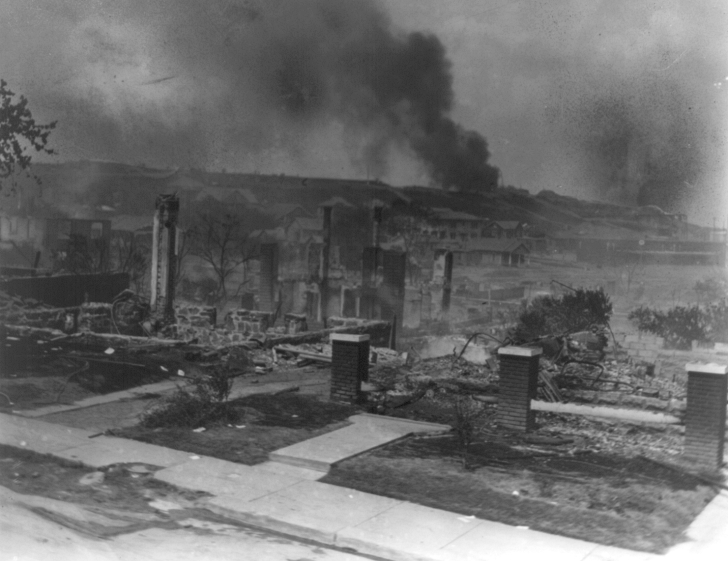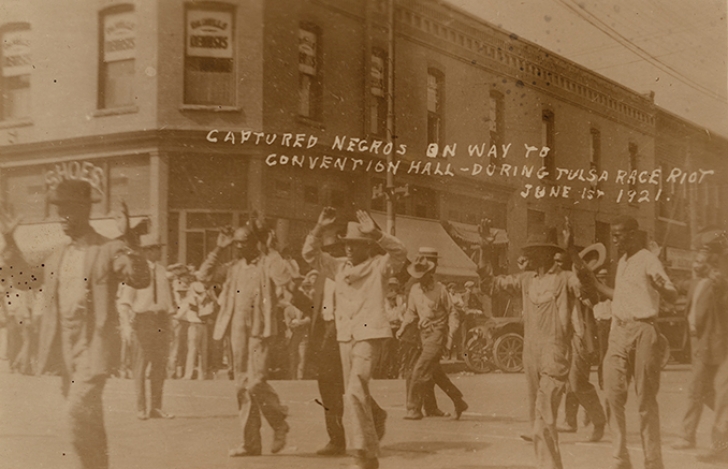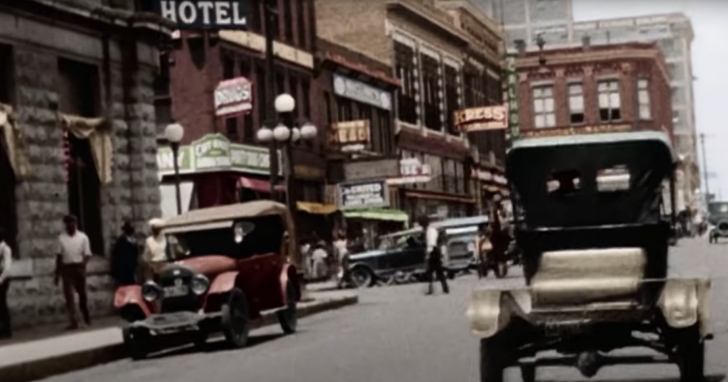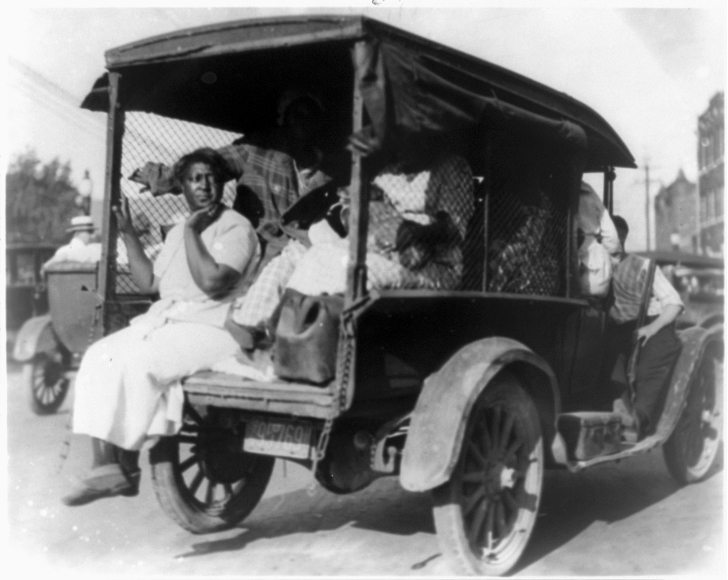Racial tensions in the US have been at crescendo for the past year and now 2021 marks the 100th anniversary of the Greenwood Massacre. on May 31st and June 1st, 1921, the city of Tulsa, Oklahoma, experienced a wave of destruction and racial violence that while shocking to us today, was not uncommon at the time. Only 2 years before Greenwood the Elaine Massacre in Arkansas resulted in the murder of 200 Black people over the possibility of demanding better pay for their crops. Then in 1921 another so-called “race riot” broke out in Tulsa, in the historically Black neighborhood of Greenwood. This area was where many African Americans had found prosperity, unlike other cities where non-white neighborhoods were always the poorest.

Known as the Black Wall Street, Greenwood was a freedom colony- a place settled by freemen and the former enslaved following the end of the Civil War. By the turn of the century Greenwood was a thriving community and one of the most prosperous African American communities in the US. But, all that was to change after the accusation that a Black man, Dick Rowland, had tried to assault a white, female elevator operator. It is now believed that he stepped on her foot as he entered her elevator, causing her to scream and accusations to be made.
While Rowland was in the jail a rumor was spread that he was to be lynched and a huge crowd of armed white men arrived at the courthouse carry it out. When news of the mob reached Greenwood, a group of African Americans -many of them veterans- who were also armed soon showed up to offer their services to police, who declined. While the veterans were attempting to leave a shot was fired and chaos ensued.

The violence that erupted would last a day and a half, with members of the white mob killing an untold number of people and burning down the entire area of Greenwood, leaving about 5,000 people homeless. To this day the exact number of those murdered is still unknown. A 2001 commission to discover what happened found solid evidence of 38 deaths over those 2 violent days in the spring of 1921, but credible estimates within the same report have placed that number closer to 300. 800 others were injured by the white mob.
Though many witnesses to the massacre claim to have seen firebombs dropped over Greenwood, the commission was unable to prove conclusively that these events did or did not happen, but confirmed that civilian aircraft were flying over the area for a variety of reasons during those 2 days.
Growing resentments over the prosperity of the African American residents of Greenwood is said to be at the heart of the massacre, which has historically been mislabeled as a race riot. However, thousands of Greenwood residents were kept at the convention center and the fair grounds under armed guard for their own safety.

Ironically , the residents of Greenwood profited from segregation laws which made it illegal for them to shop in white stores. This in turn boosted the local economy of Greenwood where it was said a dollar would be circulated nearly a year before leaving the confines the district. As an example of the kind of money at play there were only 2 airports at the time in OK, yet 6 Greenwood families owned their own airplanes.

In the years that followed the massacre residents who moved back were threatened with more violence should they talk about what had happened. Efforts to rebuild were likewise hindered by those who did not want to see Black Wall Street revived. Families of the slain were told that the bodies had been dumped in the Arkansas River, yet years later it has been realized that many were buried in unmarked mass graves which were then obscured. Excavations in search of these mass graves continue to this day.

You can see more footage of Greenwood and the massacre in the video below.
SKM: below-content placeholderWhizzco for DOT

